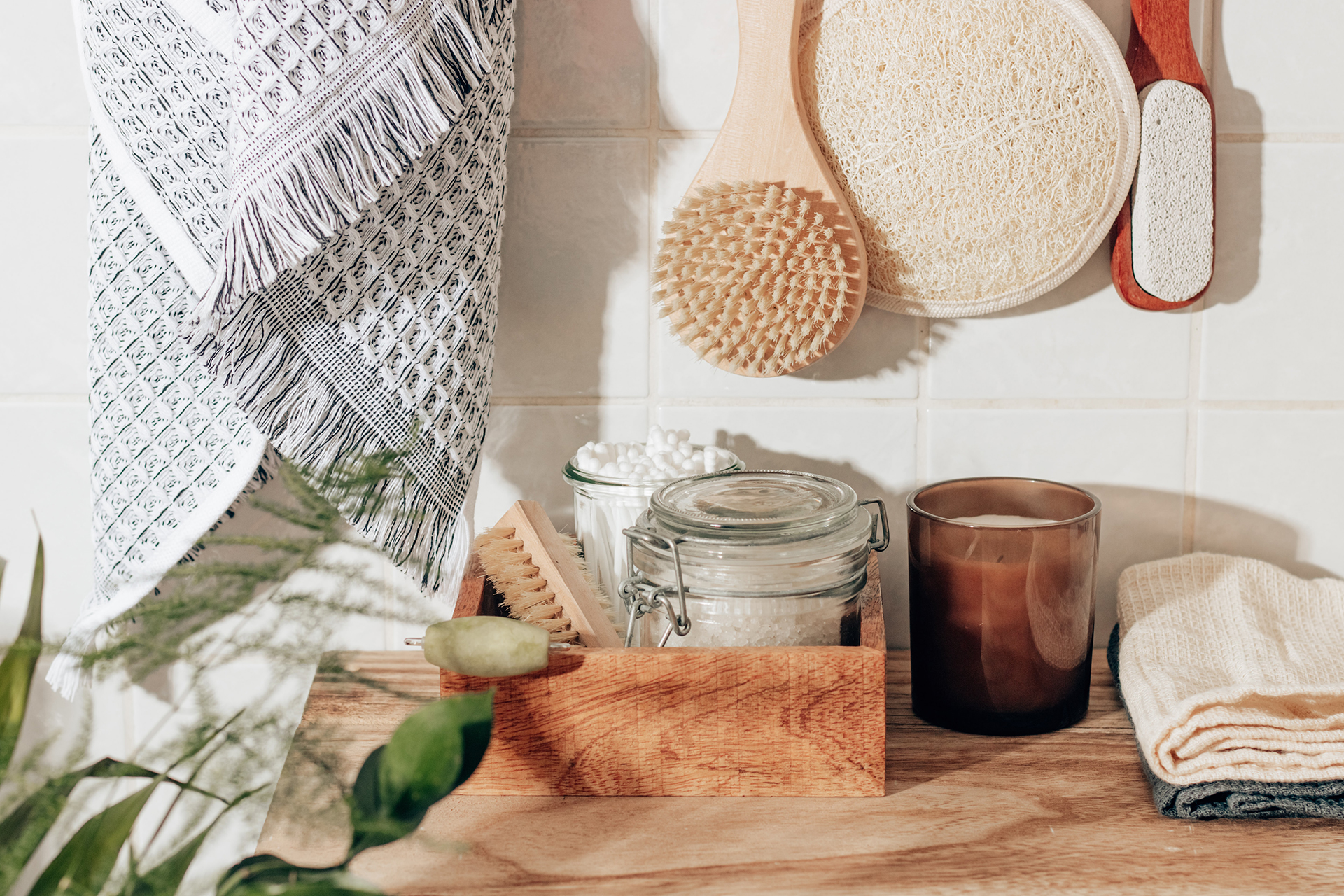
15 Small Ways to Make Your Home More Eco-Friendly
by Meghan Rodgers
May 5, 2022
When you take steps to improve the sustainability of your home, you’re making a commitment to improving the environment — but it can also immediately impact your wallet. A sustainable home is more efficient and therefore less expensive to operate. Plus, with cleaner, high-performance home materials, you’ll create an indoor environment that’s healthier for your whole family.
There are a number of ways to make your home more eco-friendly. From smart systems to lighting, windows to décor and even your regular maintenance and household habits, here are 15 steps you can take toward making a positive environmental impact at home.
1. Pick out eco-paints
Eco-paints are less toxic to manufacture plus, thy emit fewer toxins when applied to your walls. They’ve been designed to have lower levels of volatile organic chemicals (VOCs) — the cause for that generic paint smell you’ve become accustomed to. Those pollutants can persist long after the smell is perceptible and can cause short- and long-term health effects.
2. Swap bulbs
Invest in energy-efficient LED bulbs and see a huge difference in your bill! They use less energy and they last longer — a win, win.
3. Investigate your home’s insulation
Blown-in attic insulation and similar options for walls, floors and ceilings can add to your home’s efficiency all year long.
4. Use a programmable thermostat
A programmable thermostat can monitor and maximize your home’s cooling and heating systems, making it another energy-efficient and cost-effective investment.
5. Look into local renewable energy options
Many energy suppliers offer more eco-friendly options like sun, wind or hydro. Inquire and see if making a switch is an option for you.
6. Shop for some blinds or curtains
Everyone lights natural light, but by investing in window treatments now, you can more efficiently and effectively maintain your home’s temperature. Better yet — thrift for some window coverings and see if you can’t manage two eco-activities in one!
7. Create compost
You would be surprised how much trash you can remove from your weekly waste with compost. Designating a separate bin for food scraps (minus meat and dairy) not only keeps waste out of landfills but creates a nutrient-rich natural fertilizer for your garden.
8. Clean your refrigerator coils
Clean coils free of dust and soot allow the refrigerator to use less power and perform optimally.
9. Install a water filter
Adding a filter to your washing machine designed for microplastics can ensure you’re keeping microplastic from carrying on down the water supply and harming the environment. Adding a filter to your water can ensure you’re not ingesting them.
10. Keep the dryer filter clean
Maintenance does make a difference. Not only does a clean filter reduce the likelihood of a house fire, but a clean drier allows for lower energy consumption.
11. Use natural cleaning products
Switching to natural cleaning products helps keep chemicals off of your skin and out of the water supply.
13. Turn down your water heater
Residential water heaters are typically set to 140ºF, but that’s incredibly hot. Turn the heater down to 120 or 125º. You’ll still get that steamy hot shower, but you won’t be as wasteful in between washes.
13. Use smart power strips
Smart power strips can save on energy usage by sensing when your device isn’t in use and switching to standby.
14. Use dryer balls
Dryer balls prevent clothes from getting tangled together and allow warm air to circulate between them meaning reduced dryer time.
15. Line-dry your clothes
Better yet, it’s spring and soon to be summer! Line-dry those clothes for the ultimate eco-laundry hack.

Leave A Comment